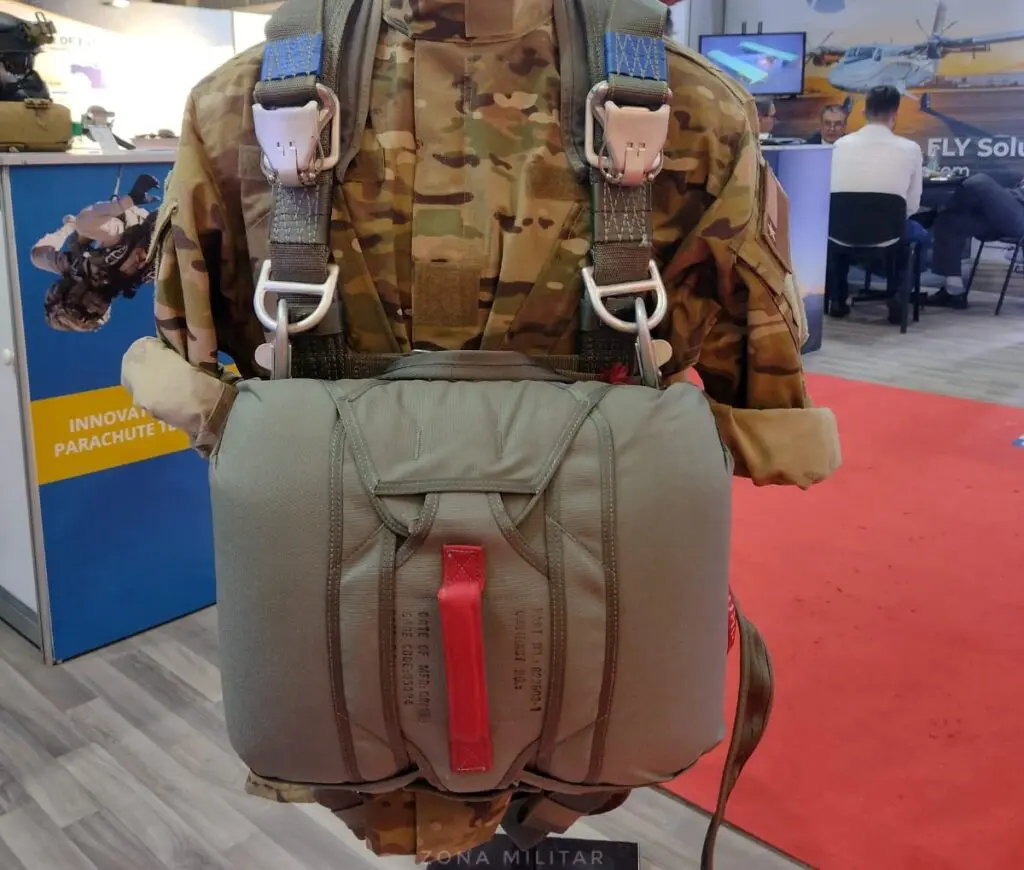Airborne Systems, a leading company in the industry specializing in the design and manufacturing of parachutes for military and space use, showcased its complete range of products at FIDAE 2024. They utilized the occasion to exhibit their latest developments and models in service with various Armed Forces.


Zona Militar had the opportunity to interview Freddy José Nieto, sales representative of Airborne Systems responsible for South America and the United States Joint Forces, including the Marine Corps. Nieto provided a comprehensive overview of the material on display at FIDAE, as well as Airborne Systems’ perspectives for the region.
Among the most relevant products exhibited by the company were the MC-6, T-11 automatic opening parachutes, and the T-11 reserve parachute. ‘Currently, the Chilean Forces have this equipment, especially in the Special Operations Brigade. This allows for joint work with other NATO nations, facilitating interoperability between forces,’ Nieto explained.
Airborne Systems has worked with the Chilean Armed Forces to refine and update part of the equipment, such is the case of the Chilean Navy, where changes were made to the reserve. The most recent collaboration has been with the ‘Lautaro’ Special Operations Brigade.


Regarding manual opening parachutes, Airborne Systems exhibited the PS-2, which is currently the system used by the U.S. Marines. Also on display is the Intruder, designed for Special Operations Forces and equipped with an oxygen system, mask, and specific design features for HAHO/HALO jumps.
“We also have autonomous cargo systems, which can receive impact zone coordinates via GPS. This equipment can be deployed from various altitudes, navigating from launch to the agreed-upon location,” stated Nieto. These models include MICROFLY II, FIREFLY, and DRAGONFLY.
These systems are already in service with U.S. Special Operations Forces, with expectations that they could be introduced to the region in the short term. Argentina is one of the interested parties aiming to enhance its Special Operations Forces capabilities.

The Argentine case generates expectations as the Armed Forces still use legacy equipment, such as the MC-4, MC-5, and MC-6 parachute models. Modernization stems from the need for equipment that can meet new demands, such as increased weights, longer lifespans, and better performance.
“… Many countries in Latin America are interested in our products. They are seeking modern, safer systems…” concluded the Airborne Systems representative.”
You may also like: ZM at FIDAE – The F-22 Demo Team showcased the capabilities of the U.S. Air Force’s stealth fighter in the skies of Santiago, Chile














